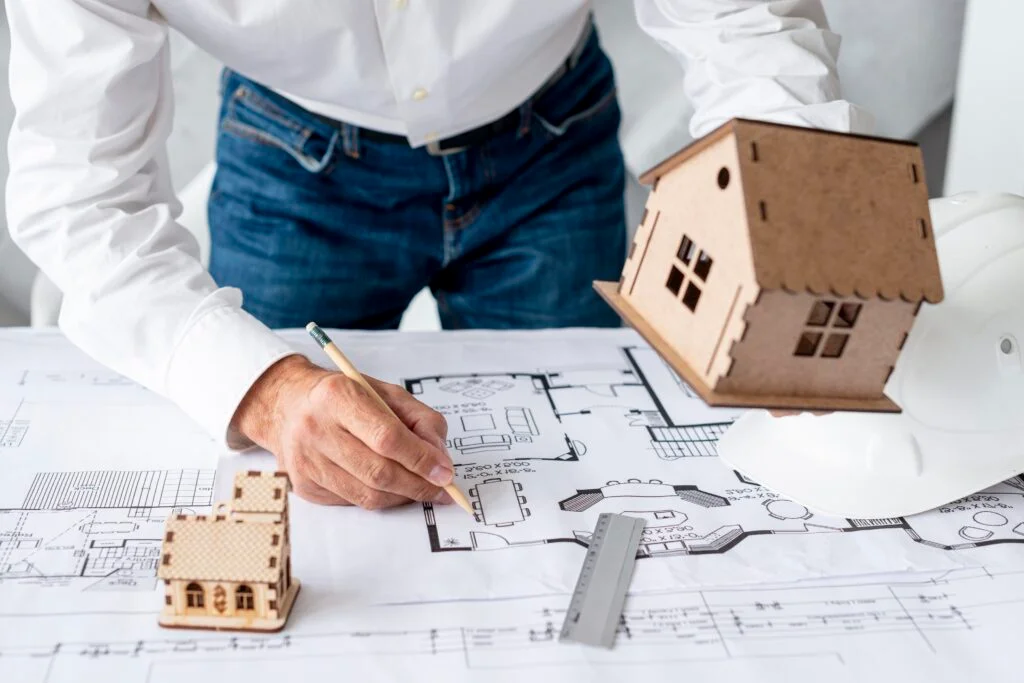Building Your Dream Home With Loan Options for New Home Construction
June 19, 2023

Embarking on the journey of building your dream home in New Zealand is an exhilarating adventure. It’s a time filled with excitement and anticipation. However, amidst the joy, it’s crucial to make wise financial decisions. In this blog, we’ll delve into the mysteries of financing your dream home in New Zealand and discover the loan options recommended by MortgageDesign, a trusted brand dedicated to helping you bring your vision to life. Let’s dive in and unlock the path to your dream home!
Building a new home comes with numerous benefits. Let's explore some of them :
- Low Maintenance: One of the top benefits of new home construction is the reduced maintenance required. While the upfront costs may be higher, new builds often come with modern materials and systems that require less maintenance over time.
- Future-Proof Design: Building a new home allows you to design a layout that suits your current needs and future goals. You can customize the space to accommodate your lifestyle and adapt to any changes that may occur down the road.
- Economical and Healthy: New constructions often incorporate the latest insulation, heating, and ventilation systems, resulting in energy efficiency and a healthier living environment. These innovations can save you money on utility bills and contribute to your overall well-being.
- Low Deposit Mortgage: Unlike existing properties, new build homes often require a lower deposit. First-time homebuyers may be able to secure a mortgage with as little as a 5% deposit. Contact Mortgage Design today to determine the deposit requirements for your new build property.
There are two primary loan options for new home construction:
- Construction-to-Permanent Loan: This combines construction and mortgage financing into one convenient package. During the construction phase, you make interest-only payments, allowing you to focus on building your dream home. Once construction is complete, the loan seamlessly transitions into a traditional mortgage, providing a hassle-free financing solution.
For example, envision constructing a stunning new home in Auckland with an estimated cost of NZD 700,000. With a construction-to-permanent loan from a lener, you can confidently cover the construction expenses while making interest-only payments based on the disbursed amount. - Standalone Construction Loan: If you prefer flexibility and freedom in selecting a mortgage option, this type of loan is an excellent choice. During the construction phase, you make interest-only payments. Once your home is completed, you have the opportunity to secure separate financing for the permanent mortgage, tailoring the loan terms to suit your unique financial situation.Let’s say you’re building a beautiful home in Wellington with an estimated cost of NZD 500,000. With a standalone construction loan from a lender, you can access the necessary funds for construction. After completion, you have the freedom to refinance and choose the best mortgage terms for your dream home.
Here are some typical expenses to keep in mind when it comes to building a new home:
- Architectural Design Costs: Creating a unique and personalized home often begins with engaging
an architect to design your vision. Architectural design costs may vary depending on the
complexity and scope of the project. These expenses cover the expertise and creativity of the professionals who will bring your dream home to life. - Land Purchases:
Acquiring a suitable plot of land is a crucial step in the new build process. The cost of purchasing land will depend on factors such as location, size, and amenities. It’s important to factor in this expense as it
sets the foundation for your future home. - Resource Consent:
Resource consent is required for certain projects to ensure compliance with local zoning and environmental regulations. Obtaining resource consent involves application fees and potentially engaging professionals to assess the impact of your project on the surrounding environment. - Building Consent:
Building consent is a legal requirement to ensure that your construction plans meet safety standards and comply with building regulations. The associated fees cover the application process and inspections conducted by local authorities to ensure compliance throughout the construction phase. - Construction Costs:
The largest component of building a new home is the construction itself. Construction costs include materials, labor, subcontractors, and project management expenses. The overall cost will depend on
factors such as the size, complexity, and level of customization of your home. - Legal Fees:
Engaging legal professionals to handle the necessary paperwork, contracts, and property transfers is an essential aspect of the new build process. Legal fees vary based on the complexity of the transaction and the services required.
At Mortgage Design, our team of expert mortgage advisers is here to guide you through every step of the process. We understand that navigating the costs involved in building a new home can be overwhelming. Our experienced professionals will provide valuable insights and help you explore financing options tailored to your unique circumstances.
Recent Post
Have Any Question?
We take into account your long-term financial goals, turning our focus to ensure that your mortgage structure is well-suited to enable your property portfolio to perform.
